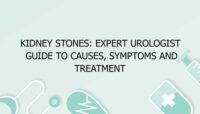Breast self-examination (BSE) is a technique where individuals check their own breasts on a regular basis to detect any changes that may indicate breast cancer. Breast self-examination may increase breast awareness and familiarity with one’s own body.
Evidence on benefits of Breast Self Examination
While BSE has been advocated in the past as a screening method, its role in detecting breast cancer early is a topic of ongoing debate among healthcare professionals.There is limited benefit in mortality with breast cancer by self breast examintion. Several large studies and systematic reviews have not shown a significant reduction in breast cancer mortality associated with regular BSE.This has led to changes in recommendations by some health organizations regarding the routine practice of BSE for breast cancer screening.
Guidelines for Self Breast Exam
Different cancer societies and healthcare organizations have varied recommendations regarding breast self-examination (BSE) as a screening method for breast cancer.
- American Cancer Society (ACS):
- The ACS no longer recommends routine monthly breast self-exams for all women.
- Instead, they emphasize breast awareness, encouraging women to become familiar with how their breasts normally look and feel.
- Women should promptly report any new breast changes or abnormalities to their healthcare provider.
- Canadian Cancer Society (CCS):
- The CCS does not recommend regular breast self-exams for all women.
- They also stress breast awareness, including knowing the normal look and feel of breasts and reporting any changes promptly.
- National Comprehensive Cancer Network (NCCN):
- The NCCN emphasizes breast awareness and education but does not recommend routine breast self-exams for all women.
- They recommend that women should be aware of their breast health and promptly report any changes to their healthcare provider.
- World Health Organization (WHO):
- WHO does not recommend routine breast self-exams for all women.
- They emphasize the importance of breast awareness and education, including understanding breast changes and seeking medical attention for any abnormalities.
- European Society for Medical Oncology (ESMO):
- ESMO recommends against routine breast self-exams for all women.
- They advocate for breast awareness and education, encouraging women to know their breasts and promptly report any changes to their healthcare provider.
While none of the Prominent cancer societies recommend routine self examination of breast by individuals, They do stress upon awareness of one’s breasts to report any abnormal changes whenever detected.
Limitations and Drawbacks of Breast Self examination
BSE can sometimes lead to increased anxiety and unnecessary medical visits due to false-positive findings. Many benign breast conditions can mimic cancerous changes, leading to unnecessary worry and interventions.
How to Perform Breast Self Examination (Steps of BSE)
Regular examination is crucial to make oneself comfortable with own body and detect any abnormal changes at the earliest.Here are the steps to perform a self-breast examination:
- Choose a Time: It’s best to perform a BSE a few days after your menstrual period ends when breasts are less likely to be swollen or tender. If you no longer have periods or your periods are irregular, choose a specific day each month to perform the exam.
- Visual Examination:
- Stand in front of a mirror with your arms relaxed at your sides.
- Look at your breasts in the mirror. Note their size, shape, and any changes in contour or symmetry.
- Look for changes in skin texture, such as dimpling, puckering, or redness.
- Check for nipple inversion (turning inward), discharge, or any changes in nipple appearance.
- Raise Your Arms:
- Raise your arms overhead and look for the same changes in breast appearance, contour, and skin texture.
- Check for any signs of fluid or discharge from the nipples.
- Manual Examination (While Standing or Lying Down):
- Use the pads of your fingers (not the fingertips) to palpate the breast tissue.
- Start at the outer edge of the breast and move your fingers in small circular motions, gradually working toward the nipple.
- Cover the entire breast and armpit area, checking for any lumps, thickening, or hardened knots.
- Apply light, medium, and firm pressure to feel different breast tissue depths.
- Note the texture of the breast tissue and any changes from previous exams.
- Repeat the process for the other breast.
- Nipple and Areola Examination:
- Gently squeeze the nipple to check for any discharge (clear or bloody).
- Examine the areola (dark area around the nipple) for any changes in texture, color, or presence of bumps.
- Lying Down Examination (Optional):
- Lie down on your back with a pillow under your right shoulder and your right arm behind your head.
- Use your left hand to examine your right breast and armpit using the same circular motions as described earlier.
- Repeat the process for the left breast by switching arm and pillow positions.
- Report Any Changes: If you notice any changes, such as new lumps, thickening, skin changes, nipple discharge, or persistent pain, inform your healthcare provider promptly for further evaluation.
What to Look for in Breast Examination
Individual doing self breast examination should look for these signs which may indicative of underlying breast cancer
- Lumps or Thickening:
- Feel for any new or unusual lumps or areas of thickening in the breast tissue.
- Note the location, size, shape, and texture of any detected lumps.
- Changes in Breast Size or Shape:
- Look for changes in the size, shape, or contour of one or both breasts.
- Pay attention to any asymmetry or visible changes in how the breasts appear.
- Skin Changes:
- Check for skin changes such as dimpling, puckering, redness, scaliness, or unusual texture on the breast skin.
- Note any changes in the appearance of the nipple or surrounding skin.
- Nipple Changes:
- Look for changes in nipple position, shape, or inversion (nipple turning inward).
- Check for discharge (other than breast milk) from the nipples, which may appear clear, bloody, or colored.
- Breast Pain or Discomfort:
- Note any persistent pain, tenderness, or discomfort in the breast or nipple area.
- Differentiate between normal cyclic breast changes related to menstruation and unusual or persistent pain.
- Lymph Node Changes:
- Check the underarm (axillary) area for any enlarged or swollen lymph nodes.
- Enlarged lymph nodes can sometimes indicate breast or other health issues.
- Consistency with Previous Exams:
- Compare your findings with previous self-exams to note any new or changing abnormalities.
- Keep track of any changes in a breast health journal or diary.
Breast self examination is a part of complete breast evaluation which include clinical examination by health care professional along with screening with regular mammography and other test for early detection of breast cancer. Mammograms can detect breast abnormalities at an early stage, often before they can be felt through BSE.
Conclusion
In conclusion, All women are advised to do self examination regularly. Self examination can detect few early changes in individuals which may help take necessary action. Although there may be some false positive results which may cause anxiety and unnecessary testing but overall most societies recommend regular examination to increase awareness about the breasts. Breast cancer is a deadly disease and early detection with help of self and clinical examination along with regular screening tests can help to control the disease.So its time to familiarize yourself with the proper techniques of breast self-examination in case if you haven’t done it already.


